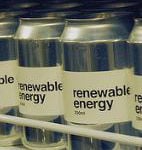As the world starts negotiating toward a climate deal at Copenhagen, the European Union still claims the leadership role it displayed in the Kyoto agreement. Brussels bases this boast on the package of energy and climate-change policies that the EU’s 27 member states agreed last December. This package was deliberately agreed a year ahead of Copenhagen to set an example. But how far will it deliver the 20% emission reduction it claims, and how far is it a model for countries such as China, and indeed for a global deal? These are among the questions my new book raises and seeks to answer.
Certainly the financial crunch and economic recession confirmed the EU’s wisdom in relying on a mix of non-market tools of regulation and targets, as well as the market mechanism of emission trading. The EU is proud of having created the first cross-border cap-and-trade system in its Emission Trading Scheme (ETS), which is the main instrument for implementing Kyoto. After operational errors and little emission reduction in its first phase (from 2005 to 2007), it is now having some impact in reducing emissions in the first year of its second phase (from 2008 to 2012).
There are many advantages to a cap-and-trade system. It has economic elegance and political convenience. Unlike a carbon tax, it offers flexibility across sectors and across countries – hopefully including China one day. Like a carbon tax, it provides a convenient source of revenue (through auctions of carbon allowances) for governments. But it can also get, through trading of emission credits, industrialised countries’ money into developing countries, such as China for climate-change control, in a way that is easier politically for European governments than if their parliaments had to vote to transfer carbon tax or carbon auction revenue to Beijing.
But recession has depressed the carbon price on the ETS. This is the natural effect of lower industrial production and therefore lower demand for pollution permits, a process that will go into reverse with eventual recovery. In the meantime, however, it leaves the carbon price too low to provide any short term incentive for alternative energy or energy saving. So to bolster the ETS, the EU has been wise to set regulations for car emissions and energy efficiency standards for products, and minimum targets for renewables and biofuels.
The EU has also been a positive example in one other aspect: how richer and poorer states can combine to carry out differentiated emission reductions. The EU is a sort of microcosm of the world. It contains more than one-eighth of all countries in the world. The income per capita spread between its richest and poorest members (Luxembourg and Bulgaria respectively) is, in fact, wider than that between the United States and China. The EU’s richer states have agreed to take on more of the emissions reduction burden than the poorer ones, essentially new member states from central and eastern Europe. The former are cutting emissions to allow the latter to increase emissions and so give them some headroom for further economic development.
There is a caveat for Copenhagen. This EU burden-sharing agreement was not as easy as might have been expected among a group of neighbouring states that aspire to common values and have common policies to promote economic policies. The central and eastern European states held out for a bigger transfer of money from the richer member states, foreshadowing the global scale bargaining that will take place in Copenhagen later this year. In fact, one of the new member states’ conditions may make that bargain in Copenhagen all the harder to reach. New EU states are to be allowed to phase in carbon allowances auctions for their power companies. This means that for a while there will be less auction revenue available to pass on (in addition to payment for emission reduction credits in countries like China) to developing countries as part of a grand bargain in Copenhagen.
But the EU and its member states are guilty of some complacency in earmarking less of their anti-recession stimulus spending to green energy programmes than the US and China, according to a survey by HSBC research. This complacency may partly reflect the fact that a lot of European electricity generating plants are quite old and due to be replaced in the next few years anyway. But Europe may also feel it has less need than the US and China to kick-start green energy investment, when this is clearly not true in countries such as Britain, which lag badly in renewable energy.
Nor has the EU, as an international organisation, been of any use to those of its member states that want to pursue nuclear power, the only low-carbon energy source of any real scale. In my book, I rate aspects of EU energy policy according to potential and performance. I find the biggest gap – where EU performance falls behind EU potential – is in nuclear power. No one expects the EU, or its nuclear organisation European Atomic Energy Community (EURATOM), to succeed in getting a consensus among 27 member states about the need for nuclear power. But I do argue that EURATOM, with its elaborate treaty powers, large staff and sizeable funds ought to have been able to do more to help pro-nuclear states deal with the key issues of waste fuel disposal and reactor decommissioning.
Perhaps Europe’s most useful role in the Copenhagen negotiations will be, in horse-racing terms, as “pace-maker” for the US, ensuring the US now moves faster than it otherwise would (though, of course, China’s approach will also have a great influence on what Washington does). Over the past eight years, this role for the EU did not exist, because the US “horse” refused to leave the starting stall. Now with a new “jockey” in president Barack Obama, the US is moving, but we do not yet know how far – and how fast.
In trying to force the pace, the EU has sought to give itself leverage over others by committing itself unilaterally to 20% emissions reduction by 2020 (on 1990 levels), but offering to go to a 30% reduction if others will match it. Yet President Obama will be lucky to get Congress to agree anything more than pulling US emissions back, by 2020, to their 1990 level. Therefore, Europe may awkwardly find itself unable to exert any extra bargaining pressure on other industrialised countries, if these countries fail to commit to anything comparable to a 20% emission cut. After all, leaders do need followers, if leading is to mean anything.
David Buchan is a senior research fellow at the Oxford Institute for Energy Studies.
“Energy and Climate Change: Europe at the Crossroads”, by David Buchan, published by Oxford University Press for the Oxford Institute for Energy Studies at £25. For sales contact [email protected].
Homepage image by tristam sparks

